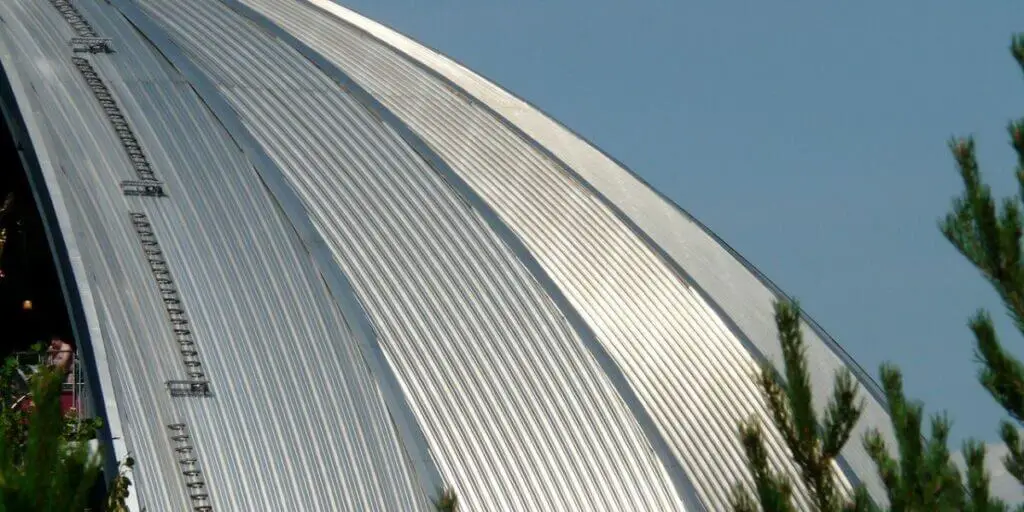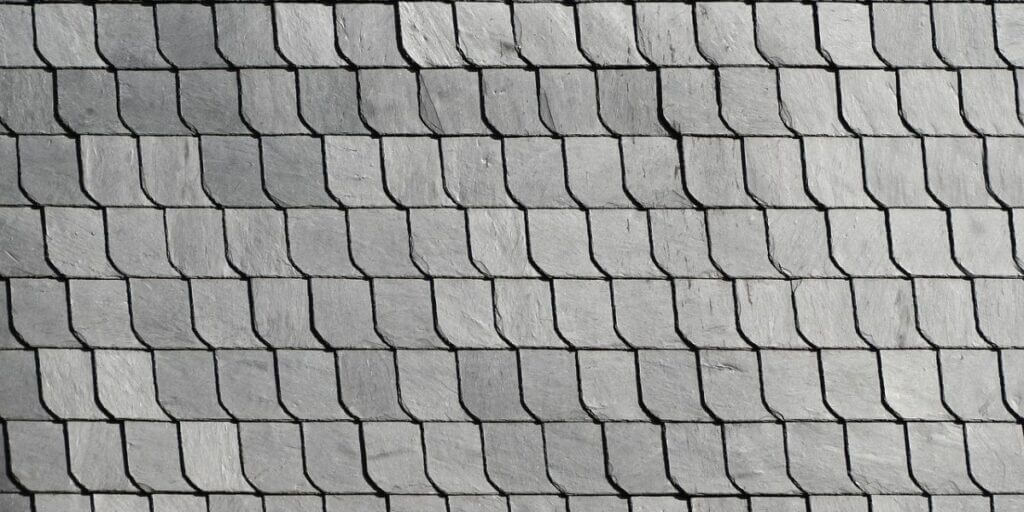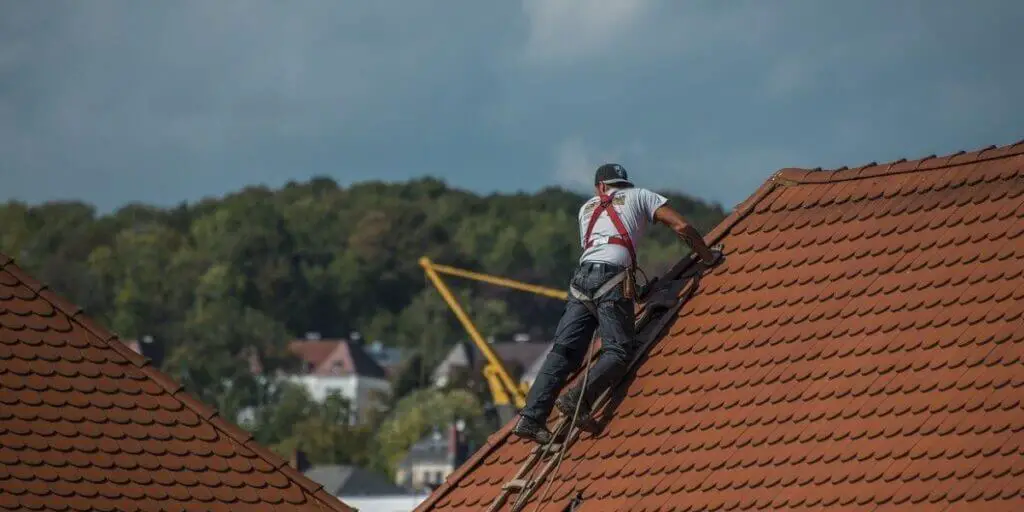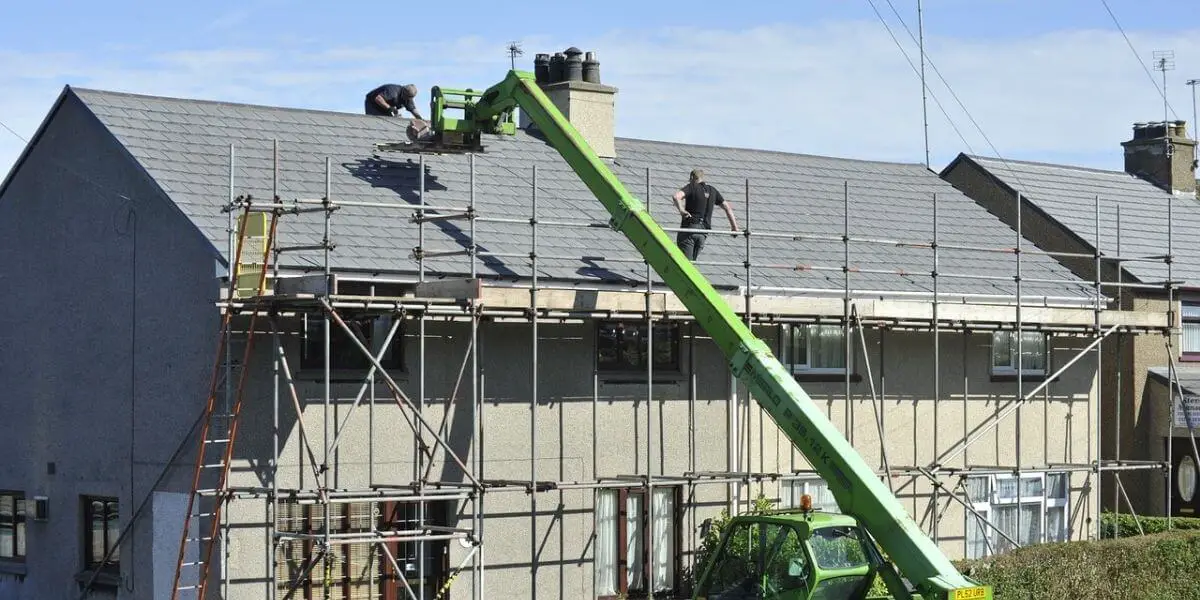There are many warehouse roofing materials available in the market. Everyone has their own advantages and disadvantages. The roof of the warehouse is the main aspect of the entire warehouse. The warehouse protects your goods and equipment from thunder, dust, sunlight, rain, and other disasters. That’s why the roof of the godown must be strong and durable..
The infrastructure for manufacturing activities, e-commerce stores, and logistics is increasing daily. Warehouses are being built to store large goods. Therefore choosing the suitable roofing material for the warehouse is a responsible job. It is essential that the roof minimizes the risk of water infiltration and protects your inventory from water seepage. Always choose roofing materials that can be repaired quickly and cheaply.
These are some of the Warehouse Roofing Materials.
1. Metal Roofing Materials

Metal roofing materials are the finest and most expensive materials. Some metal roofs will last 90-100 years or more. Metal roofing material requires less maintenance but costs more than other materials.
1. Aluminum Roofing Material
There are many reasons for using aluminum for warehouse roofing. Some excellent properties of aluminum are.
- Rustless material: It does not rust even when in direct contact with water, increasing its durability.
- Lightweight: Aluminum is a lightweight but strong material. The Aluminum roofing sheet is lighter than other roofing materials.
- Easy to Install: Aluminum roofing sheets are easy to install. This can save you time, money, and energy.
- Long-lasting: It is a long lasting option that can last for around 60-70 years.
- Environment Friendliness: Aluminum Environment Friendliness does not cause any harm using it. Aluminum material has excellent recyclability rates.
- Heat Reflector: Aluminum material is a good heat reflector. This keeps the temperature of the warehouse low by reflecting the sun’s heat.
2. Zinc Roofing Material
Zinc roofing material is popular for roofing, it is easy to install and low maintenance. Zinc material has been used as a warehouse roofing material for roofing for over 150 years.
- Eco-friendly roofing: Like Aluminum material, zinc is also environmentally friendly. Zinc material can be completely recycled. Roofs made of zinc last for about 100 years.
- Attractive Look to Roofs: Many roofing materials are available in the market. Which will give you a good-looking roof. But zinc material gives you a great attractive look.
- Easily Shaped Install: It is really very easy to install on roofs. Because it is very light. It is also easy to transport. Zinc can be easily folded into unique shapes for a beautiful and unique roofline.
- Ability to Self Repair: Scratches and corrosion are repaired by zinc itself over time. This is a unique and fantastic feature that zinc roofing provides.
3. Steel Roofing Material
Steel material is also very famous for roofing. Which is very much used by roof constructors.
- Good High Strength: Steel Roofing has a high strength-to-weight ratio which means it has high strength per unit mass.
- Good Flexibility: Steel material is very flexible, due to which it remains in severe blinds and storms. Steel can mold it into any shape without changing its properties.
- Very Durable: Steel is a very durable material. A well-built steel roofing can last 30-40 years or more if maintained well.
4. Copper Roofing Material
Copper roofing is increasingly popular for both industrial and domestic applications. These materials have been used for roofing since medieval times. Copper roofing is still seen in some medieval buildings and churches. It gives a golden look which makes it look more attractive.
- Lightweight and Flexible: Copper is a lightweight material that can be easy to install and transport.
- Elegance and Attractiveness: copper roofing looks Elegance and Attractiveness.
- Environmental Friendly: Copper is an energy-efficient and environmentally-friendly material. It also reflects heat, which maintains the temperature of the warehouse.
2. Liquid-Applied Roofing
Liquid-applied roofing is also known as liquid-applied membrane (LAM). LAM is a monolithic, fully bonded, liquid-based coating roofing material suitable for waterproofing and roofing applications.
When the liquid spray is applied to the roofing. The entire roof is coated and covered. This liquid fills in cracks, gaps, and voids in the substrate.
The liquid-applied roofing method is cost-effective, especially for roof repair. It is easy to use and safe. The sprayed liquid completely seals the roof and increases its durability.
3. Asphalt Shingles Roofing

Asphalt shingles are attractive and versatile. It is highly resistant to wind and fire. Asphalt shingles have been in use since 1890 for roofing. Due to its excellent properties, It become trendy. About 70 to 80 percent of Asphalt Shingles are used for the roof in the United States.
It is easy to install and care for. The manufacturing companies produce it in perfect shape and size.
Asphalt Shingles are of two types.
Organic Shingles Roofs that last for about 20-30 years. Organic shingles are made of paper or wood components.
Fiberglass shingles have been used since the 1950s. It lasts for about 30-40 years. Fiberglass shingles are so-called because they have made of fiberglass.
4. Single-Ply Membrane Roofing Systems
Single Ply roofing is the most popular flat roofing material. It is used a lot these days due to its properties. It is more durable as well as fire-resistant.
There are three main types of single-ply Membrane Roofing Systems:
- TPO (Thermoplastic Polyolefin)
- PVC (Polyvinyl Chloride)
- EPDM (Ethylene Propylene Diene Monomer)
Single Ply Roofing Pros
- Easy to install.
- Lightweight product.
- Economically feasible.
- Good eco-friendly.
Single Ply Roofing Cons
- A thinner surface.
- A water retention problem may occur.
5. Modified Bitumen Roofing
Modified Bitumen (MB) roofing is asphalt-based roofing. MB is used for low-slope or “flat” roof structures. Bitumen roofs have five layers of protection: Insulation, Modified Base Sheets or Plies, Modified Bitumen Membranes, Adhesive, and Surfacing. Which can withstand an extreme environment. It originated in Europe in the mid-1960s. After this, MB started being used in the United States and Canada.
- Waterproof: Bitumen roofs are the most waterproof commercial roofing options available in the market.
- Energy-efficient: The top layers of bitumen roofs have the feature of reflectance and thermal emission. It reflects the heat of the sun. So that inside the temperature of the warehouse is low.
- Flexible: It is flexible roofing material and it expands and contracts without losing its shape and properties.
Easily maintain and repair: Bitumen Roofing is easy to maintain and repair. But it needs regular maintenance.
6. Green Roofing

Green Roofing is the new age roof. Which is partially or entirely covered by small green plants. Applied on a waterproof membrane.
There are two types of Green Roofing
- Extensive green roofs: it can hold up to 25 pounds of vegetation per square foot,
- Intensive green roofs: they can hold 150 pounds per square foot.
Green Roofing has many advantages, such as. It reduces the overall heat conducted by the buildings, and green plants prevent the distribution of smog, dust, and pollution.
7. Built-Up Roofing
Built-Up Roofing (BUR) is mostly used for low slope. This is the alternative roofing system of bitumen (asphalt). It consists of multiple layers of bitumen.
The built-up roof has three parts: Bitumen material, ply sheet, and surfacing materials.
Advantages of Built-up Roofing
- Multiple layers of protection
- Good Thermal Performance
- Fire and Uplift Resistance
8. Composite Roof

Fiberglass, paper products, and asphalt mixers make composite roofing materials. Composite shingles are fire-resistant and moisture-resistant. It does not crack, split, peel, or warp. It is a more durable material.
Some composites are environmentally friendly, while some are not. Some composites are made from material plastics and hemp fibers. Which are not environmentally friendly at all.
Advantages of composite roofing material
- Quickly to repair: The composite roofing sheet comes in small pieces. If composite shingles damage occurs, only those shingles need to be replaced.
- Readily available: This market is easily available in different materials, sizes, and colors.
- Durability: It is good durable roofing material. Experts say that it can withstand for 30 to 50 years.
9. Twin Skin Roofing
Twin skin metals are used for commercial roofing. It is a flexible, lightweight, and cost-effective commercial roofing material. It required minimum maintenance.
The twin roof system consists of two metal sheets. one on top and the other at the bottom. This metal sheet can be steel, aluminum, copper, zinc, stainless steel, or titanium.
Z-purlin is used to fix the user and lower sheets. Insulation and vapor barriers are used to fill the gaps.
Conclusion
We have seen some warehouse roofing materials that the construction companies are using nowadays. In the future, there will be new warehouse roofing materials in the market. which will be even better.
Read another post:


Comments are closed.